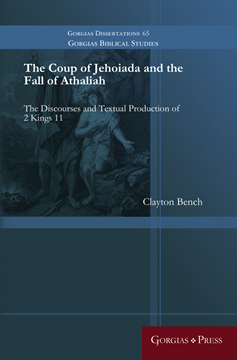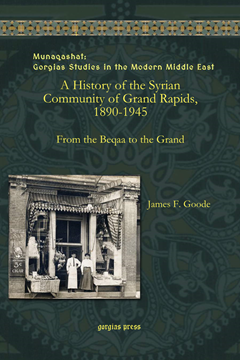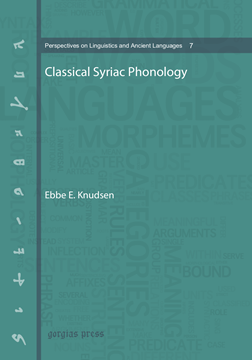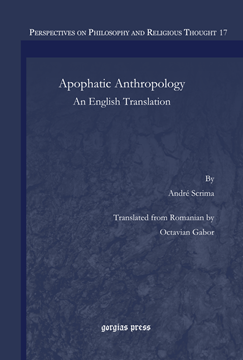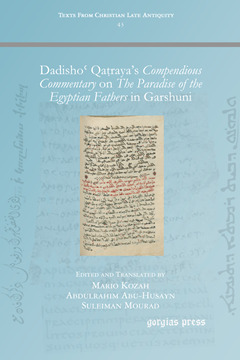The Coup of Jehoiada and the Fall of Athaliah
The Discourses and Textual Production of 2 Kings 11
Series: Gorgias Biblical Studies 65
ISBN: 978-1-4632-0577-5
The Coup of Jehoiada and the Fall of Athaliah explores the discursive and historiographical techniques used to incorporate 2 Kings 11 into the larger deuteronomistic history. More specifically, this book explores how and why the report of Athaliah’s execution was not incorporated into the deuteronomistic history the same way as other Ahabite death reports found in 1 Kings 14 – 2 Kings 10.
$151.00 (USD) $90.60 (USD)
A History of the Syrian Community of Grand Rapids, 1890-1945 (paperback)
From the Beqaa to the Grand
ISBN: 978-1-4632-0564-5
This book provides the first history of the old Syrian community of Grand Rapids, Michigan, 1890-1945, focusing on the slow process of ethnic acculturation during which community members developed a hybrid culture. Unlike some Middle Eastern immigrant groups, these Syrians were able to maintain their identity by establishing their own churches, which still exist today. At every opportunity this group is situated within the larger historical context, the decline of the Ottoman Empire, the French Mandate in Syria, the Progressive Movement, the Americanization program of the 1920s, the Great Depression and the two world wars.
$70.00 (USD)
Classical Syriac Phonology
ISBN: 978-1-4632-0525-6
This book provides a description of Classical Syriac phonology based on fully vocalized biblical texts and the detailed comments by medieval Syriac grammarians. In addition to a description of Syriac consonants and vowels (including vowel quantity and stress), there are chapters on the compararive Semitic background of Syriac phonology and the grammatical features of the pre-classical inscriptions, and comparison with both eastern and western varieties of Jewish Aramaic. The modern dialect of Turoyo is also examined, and two appendices discuss the traditional pronunciation of West Syriac and the pronunciation of Modern Literary Syriac, and offer a sketch of Turoyo phonology.
$134.00 (USD) $80.40 (USD)
Apophatic Anthropology
An English Translation
By André Scrima; Translated by Octavian Gabor
ISBN: 978-1-4632-0565-2
An English translation of André Scrima's 1952 work on Apophatic Anthropology. Pascalian in essence, the approach departs from the Augustinian roots of Western Christian theology and develops a Christian anthropology based on Eastern Orthodoxy. The endeavor of a human being to understand oneself does not lead, as in the case of Pascal, to identification with Jesus Christ’s suffering, but further, to an attempt of deification, theosis, in which the main concept is Incarnation. This attempt opens to man the possibility to conceive himself as interior to God. Man becomes therefore the physical and metaphysical bridge between creation and the uncreated, the only creature that bears the image of God.
$147.00 (USD) $88.20 (USD)
Dadishoʿ Qaṭraya’s Compendious Commentary on The Paradise of the Egyptian Fathers
in Garshuni
Series: Texts from Christian Late Antiquity 43
ISBN: 978-1-4632-0566-9
The Compendious Commentary by the Church of the East monk Dadishoʿ Qaṭraya (7th cent.) was originally written in Syriac but was eventually translated into Garshuni or Syro-Arabic. It is a work aimed at immersing the novice monk in the spiritual lore of the monastic vocation, and saturating his mind and spirit with advice and warnings about the pitfalls of aiming to be perfect while remaining nevertheless an imperfect human being. This is a critical edition and translation of the Compendious Commentary in Garshuni that uses all available manuscripts.
$85.00 (USD) $51.00 (USD)
Hugoye - Journal of Syriac Studies (volume 17)
2014
General Editor George Anton Kiraz
Series: Hugoye: Journal of Syriac Studies 17
ISBN: 978-1-4632-0567-6
Widely regarded as a premier journal dedicated to the study of Syriac, Hugoye: Journal of Syriac Studies was established in 1998 as a venue devoted exclusively to the discipline. An organ of Beth Mardutho, the Syriac Institute, the journal appears semi-annually and will be printed in annual editions. A peer-reviewed journal, Hugoye is a respected academic source for up-to-date information about the state of Syriac studies and for discovering what is going on in the field. Contributors include some of the most respected names in the world of Syriac today.
$75.00 (USD) $45.00 (USD)
